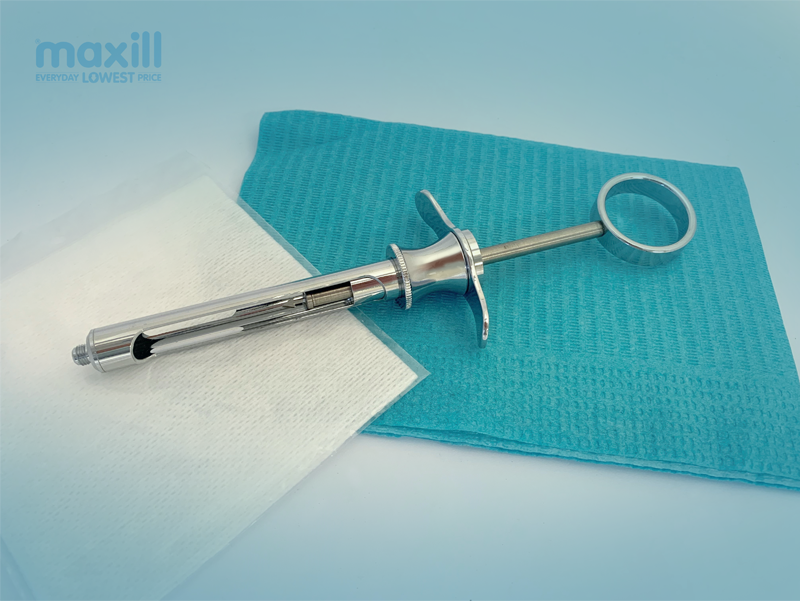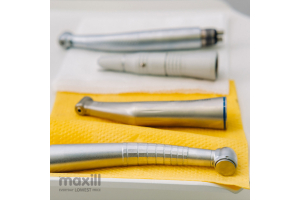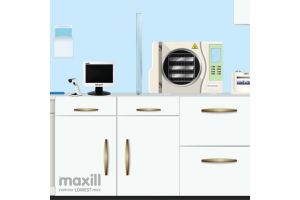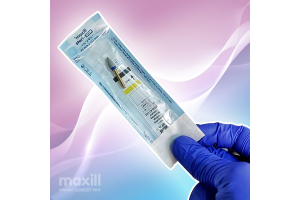All Your Questions About Aspirating Syringes – Answered!

Dentists use aspirating syringes and non-aspirating syringes to administer local anesthetics to their patients in preparation for pain-free dental treatment. Although many clinicians use non-aspirating syringes, there are benefits to using an aspirating syringe or self-aspirating syringe when administering local.
What is an aspirating/self-aspirating syringe?
To best understand the function of an aspirating syringe, first let’s review what it means to aspirate, medically speaking. Aspiration is the removal of fluids or cells such as blood, pus, ascites, or even cerebrospinal fluid, from the body. Syringes, although widely known for injecting medicine into the body, they now have the capability to aspirate.
The key difference is that an aspirating syringe has a harpoon at the end of the piston rod or plunger, that penetrates the rubber stopper at the end of the anesthetic carpule. The harpoon is lodged into the rubber stopper, allowing the clinician to pull the syringe piston back to aspirate.
Aspirating when administering local anesthetics is recommended in dentistry to ensure the placement of the needle tip is properly positioned and not located intravascularly.
How do you hold an aspirating syringe?
Holding any dental syringe is easy. There are many different designs, however the principle remains the same. The thumb on your dominant hand controls the plunger, while placing the finger grip portion of the syringe between your index and middle finger, under the finger bar. Pushing down with your thumb, while stabilizing the syringe with your other two fingers, allows easy control for aspirating, and administering the anesthetic.
How do you aspirate with the syringe when giving an injection?
An aspirating syringe is used to inject anesthetic from a carpule loaded in the syringe barrel. The harpoon allows the dentist to aspirate the injection site after placing the needle two-thirds into the soft tissues, by pulling the plunger/piston back using the thumb ring.
What is the purpose of an aspirating syringe, and why should a dentist aspirate?
The oral cavity is very vascular, filled with tiny vessels. When administering dental anesthetics, it is important to position the needle in the proper area and aspirate to ensure the needle tip is not intravascular, meaning in contact or inside a vessel.
After aspirating to ensure correct placement of the needle tip, the anesthetic remains more localized and absorbs slowly, allowing for a longer working time for the clinician, and a pain free procedure for the patient.
If administered while intravascular, this can cause heart palpitations due to epinephrine in the anesthetics, that travel easier and faster to the heart via the bloodstream. In addition, this may also cause, headaches, visual discrepancies, and even vertigo. Aspirating syringes allow you to check before administering your anesthetics to avoid these complications.
Periodically blood can accumulate and form a hematoma when the needle tip perforates a blood vessel. This can cause facial swelling, tenderness, and trismus. If you suspect that a hematoma has occurred, apply pressure to stop the bleeding and ensure hemostasis is achieved.
What should you do if you see blood in the anesthetic carpule after aspirating?
STOP! Do not deliver the anesthetic. This is your indication that you are intravascular and need to reposition your needle tip to ensure the anesthetic is being administered in the correct location. Once repositioned, aspirate again. If no blood is present upon aspiration, you are safe to administer the anesthetic.
Are there any disadvantages to using an aspirating syringe?
Like most dental anesthetic syringes, they are made from high quality metals, to allow for high heat sterilization between patients. This makes them one of the heavier instruments used in dentistry and may be difficult for some clinicians to use due to weight or size of the syringe.
There are many designs and sizes to help accommodate clinicians, such as petite aspirating syringes for those with smaller hands, ergonomic designs to reduce risk of hand injury from prolonged use, as well as aspirating syringes with silicone grips for user comfort.
With dentistry progressing, and infection control at its highest, there are now disposable, single-use anesthetic syringes for dental use being released on the market that are lighter and can be easily disposed of, ensuring no cross contamination, or need to ensure sterilization has occurred properly for multi-patient use.
Conclusion
Aspirating syringes are widely recommended for clinicians to verify the location of their needle tip before administering local anesthesia. This will ensure your patients safety and decrease the risk of complications from dental injections.
maxill® is a dental supply company. We offer a range of aspirating syringes in metric and imperial. We’ve been serving the dental community for more than 30 years and we provide premium dental products. At maxill, you can find innovative designs of aspirating syringes, other dentistry materials, and dental supplies.
You can browse our products and find the best option for your dental business. Our products and service demonstrate why our dental supply store has been the first choice of dental businesses worldwide.







